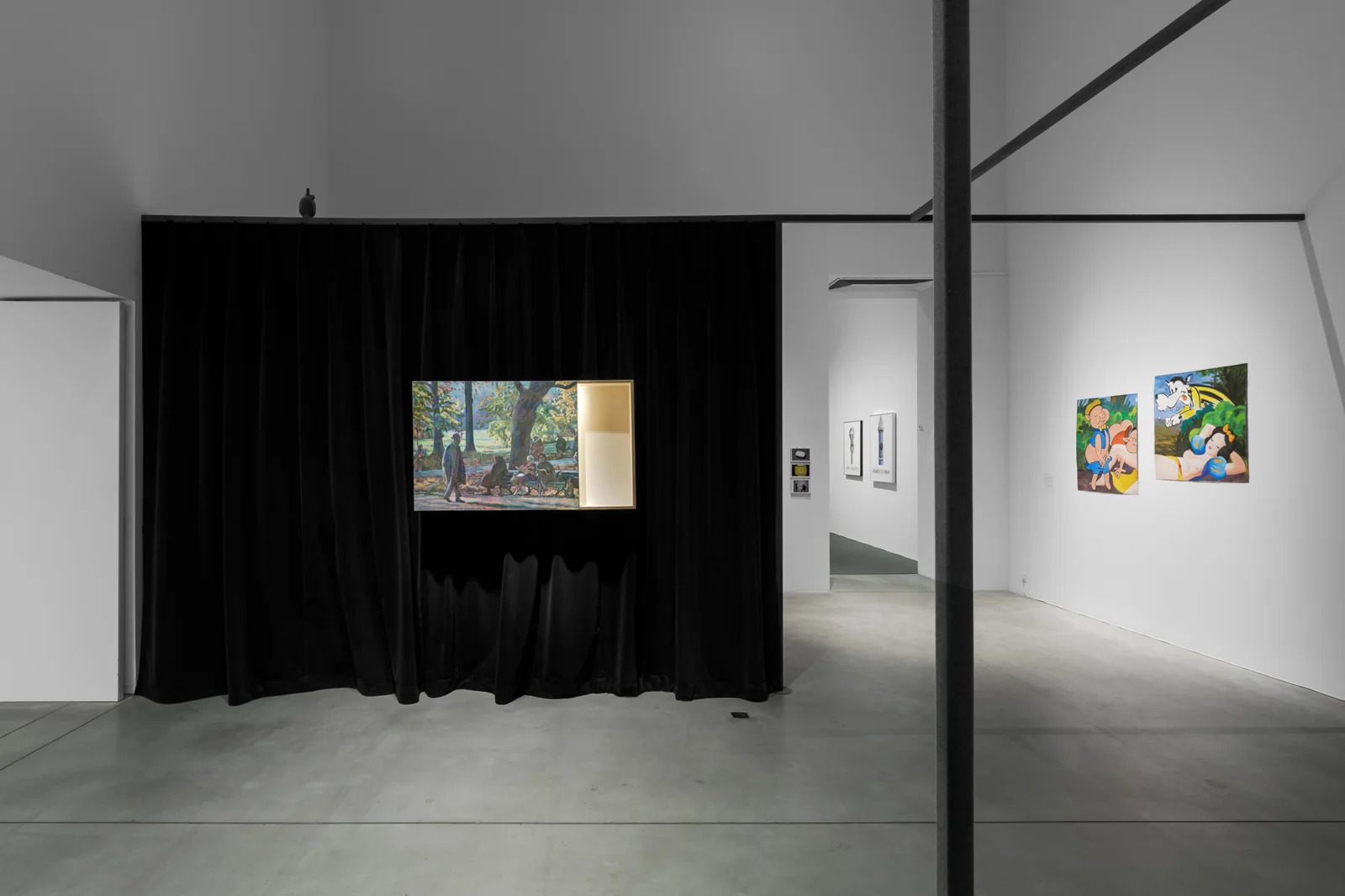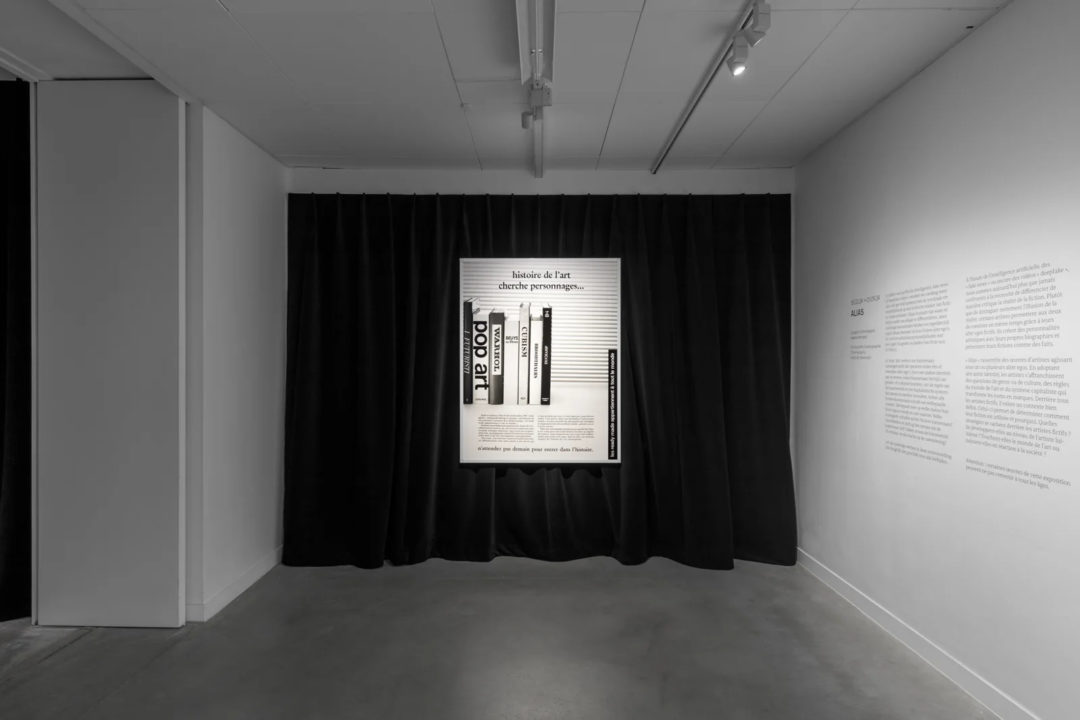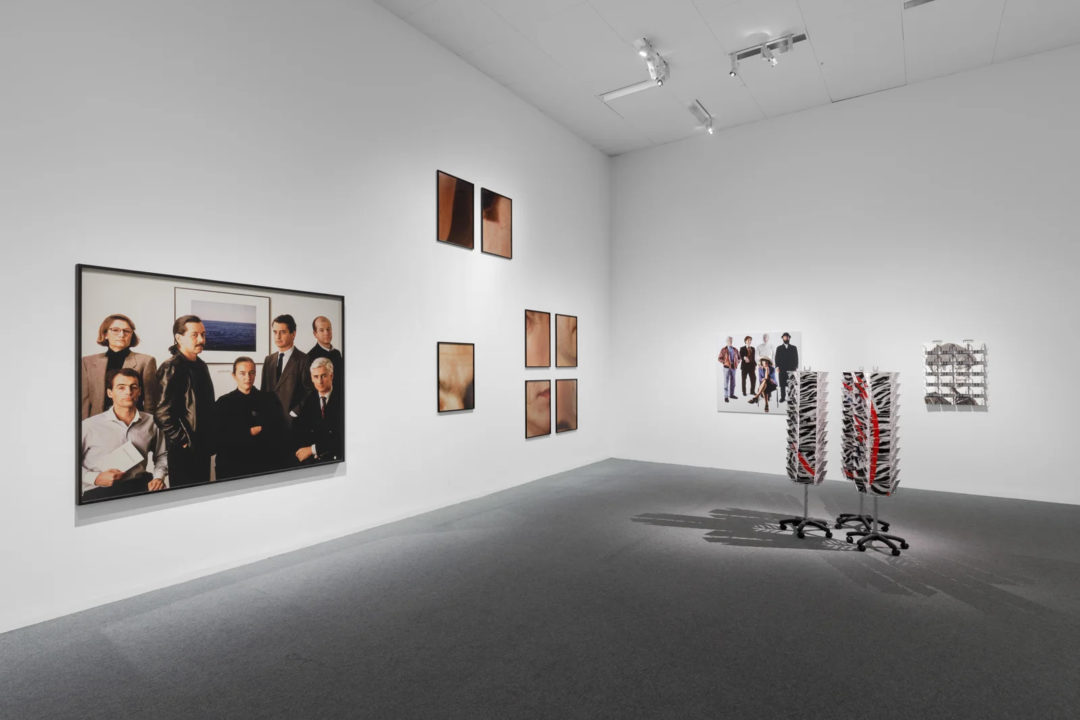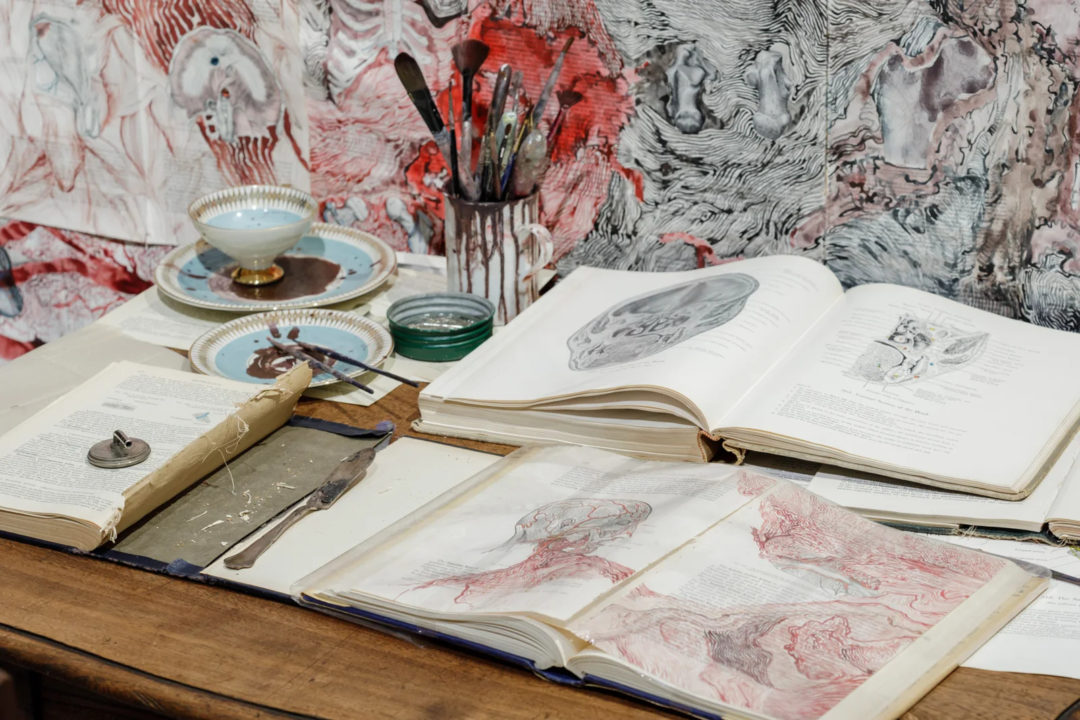Alias at M Museum, Leuven

“Alias’, M, Leuven, 15 March-1 September 2024
A practice that could be considered a farce, but isn’t – or only a little, thanks to a measured dose of humour – is the subject of a remarkable and landmark exhibition. Under the title ‘Alias’, it brings together artists who have produced works under assumed names whose function is not so much to remedy what their proper names say (social origin, women subject to the names of their fathers and husbands, etc.) as to open up a space of freedom and inventiveness from which to intervene critically in art and through art. In this way, fictitious artists are created, collectives are formed, multiple alter egos are created, and well-known names are recycled in art, demonstrating several angles of attack that Valerie Verhack, the exhibition’s curator, calls “strategies of fictionality” in the remarkable catalogue. These strategies are successively explored in a scenography designed by Deborah Bowmann, herself a fictional Belgian artist, who has structured the museum space with a keen sense of mystery.

Photo : Useful Art Services.
The tour begins with posters advertising Ready-made appartiennent à tout le monde® in several languages. Let’s recall the principle. Created in 1987 by Philippe Thomas, whose work we are rediscovering today, the agency offered collectors who bought his works the chance to become their authors, in other words, to leap from being outside art, which was theirs, to being at its heart. This has been seen as speculation on the status of the author, or as sarcasm towards ‘patrons’ who fancy themselves artists. In any case, the layout of the exhibition opens up a breach into which the rest of the exhibition can happily plunge.
The first room, strictly speaking, focuses on artists’ practices around the proper name, a generally unmentioned element that is here included in its own right in the work. For example, a composition by Ernest T. ridicules an expert looking for a small signature at the bottom of a painting, even though the painting is the signature.
In a more directly political vein, a work by Janez Janša Janez Janša Janez Janša, a trio of artists who have officially adopted the name of a far-right Slovenian politician, flirts with the limits of the administrative situation that this change of identity produces: the three artists have commissioned a multiplicity of credit cards which, when assembled, make up their identity card. In this repetition, Janez Janša ends up being nobody… Then there is a room devoted to what happens to the self-portrait in the case of fictional artists. Photographs and videos show artists in drag, and we even discover art critic Brian O’Doherty (author of the essay Inside the White Cube, 1976) disguised as several characters he used to intervene in various ways in the field of art, including an artist with a simple and eloquent name, Patrick Ireland. We also learn that two artists announced as the exact opposite of each other – their names, Aston Ernest and Santo Sterne, are anagrams – each occupying two extremes of the scale of evaluation of artistic work, one the best, the other the worst artist (even though formally their work is very similar!), are a creation of Ryan Gander that invites us to reflect on what it means to be a “good artist”. Thanks to these self-proclaimed good and bad characters, the British artist is able to work without this pressure. The exhibition also features a number of well-known artists who also work under pseudonyms without hiding their identities, including Ryan Gander, Ilya Kabakov, Roee Rosen and Walid Raad. For example, Justine Franck, Roee Rosen’s character, is a Belgian Jewish artist of the 1930s-1940s, associated with the Surrealist movement, whose name combines Sade’s Justine with Anne Franck’s surname. Her work is presented in a room that rights wrongs by evoking the work of people who might have existed, but were overlooked by history. This is also the case for Florence Hasard, a French painter from the early 20th century whose studio has been “reconstructed” in the exhibition – a work by artist Iris Häussler.

Photo : Useful Art Services.
Finally, one of the rooms in the exhibition is a firework display of name/work relationships and more: the room devoted to the collection of Yoon-Ja Choi & Paul Devautour. There’s a painting by Claude Lantier, hanging at the very top of a picture rail, as did the painter, unhappy hero, of Émile Zola’s Œuvre, and sculptures by a certain J. Duplo, who only works with Lego, and the bizarre, self-reflexive works of David Vincent… All of which mimic the real-life approaches of post-minimalist, post-conceptual artists… The moral is that you don’t need to be a billionaire to own a fine collection of contemporary art – using your imagination is a much better way to go about it.
There’s so much more to say about this exhibition, with its wealth of works by artists whose names we don’t necessarily recognise, and it’s so good to see. As Ernest T. suggests, we shouldn’t look for guarantees in the signatures at the expense of paying attention to what we have in front of us.

Photo : Useful Art Services.
Head image : Exhibition view « Alias », M Leuven, 2024.
Photo : Useful Art Services.
- From the issue: 108
- Share: ,
- By the same author: Jérôme Zonder at Casino Luxembourg, Nathaniel Mellors, ELNINO76, Yannick Ganseman*, Théo-Mario Coppola,
Related articles
Performa Biennial, NYC
by Caroline Ferreira
Camille Llobet
by Guillaume Lasserre
Thomias Radin
by Caroline Ferreira